CLAY – the miraculous ground
Fragment extracted from the “Mini encyclopedia of Romanian naturist medicine” by yoga teacher Gregorian Bivolaru
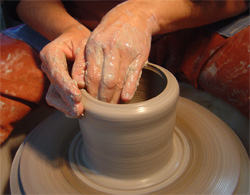 Excepting the shape that some people find it funny to shape, clay doesn’t have, obviously, anything that might remind us of a vegetable or a fruit. However, like the vegetables it supports and enriches, it contains many minerals and oligo elements. It is, like them, gifted with numerous qualities.
Excepting the shape that some people find it funny to shape, clay doesn’t have, obviously, anything that might remind us of a vegetable or a fruit. However, like the vegetables it supports and enriches, it contains many minerals and oligo elements. It is, like them, gifted with numerous qualities.
This very old therapeutic method is indeed of a rare power and its only fault lies in the fact that it is too famous, so therefore vulgarized. In the literature of past centuries, we find astonishing examples of healing of numerous conditions, some often serious.
Clay seems to have almost all the qualities: it is a very powerful agent of physical regeneration, information which is more well- known now after they discovered oligo elements used in therapy. The composition of clay allows us to explain its remineralizing, balancing and antitoxic action. All these properties have been known since ancient times.
It seems that, in connection with clay, as well as in other areas, some ancient scripts were lost. We know, however, that the Egyptians used it for the mummification of cadavers (the antiseptic properties of clay).
If we take ad literam quotes from the ancient texts, clay seems to have been endowed, in old times, with certain virtues vanished nowadays. Indeed, now we don’t think to treat certain tumors or bone deformities with some patches of clay, it is used only as a supporting treatment. Certain populations, lacking other means, still use today, in the treatment of such cases, only clay baths and patches and have obtained great results.
It is possible that when applied to bone injuries, clay patches or baths may no longer have the same efficiency nowadays in comparison to the one noticed previously, due to habit (tradition) over several generations or to psychological influences which have arisen in certain human groups. The biological characteristics of our contemporaries are, certainly, somewhat different from those of the man that lived two or three thousand years ago. Thus, more than half a century ago, people found that the normal percentage of cholesterolemy (the concentration of cholesterol in the blood) was between 1,80 and 2,20 g/l blood. Currently, many authors believe that it can be raised to 2.40-2,50 g/l blood.
Thus, the responses to this treatment may modify acording to the physiological conditions of the moment. Perhaps this is one of the possible explanations of certain sometimes criticized “therapeutical means”. The new medication makes the connection to the old ones which have become inactive in time.
In Indochina between 1950 and 1953, many doctors noticed that certain drugs ineffective on wounded French people, were proven to be very effective when administrated to the Vietnamese.
It seems that the habit of using natural medicines is commonly limited by time. But for many contemporaries, due to the long forgetfullness in which it was held, the treatment with clay could play the role of a “new” therapy.
The Greek doctor Dioscoride attributed clay as a tremendous force. Pliny the elder, Galen and Avicenna spoke extensively in their writings about it.
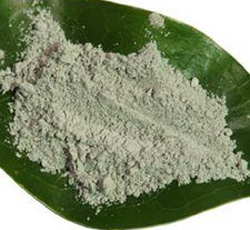 Louis XIV gladly used clay because his strong appetite sometimes caused him certain inconveniences. Literature reported of anal cracks, hemorrhoids and other impairment of the Sun King “plethora”. Is this the reason for which, according to Saint-Simon, Louis XIV would use a lot of this dust?
Louis XIV gladly used clay because his strong appetite sometimes caused him certain inconveniences. Literature reported of anal cracks, hemorrhoids and other impairment of the Sun King “plethora”. Is this the reason for which, according to Saint-Simon, Louis XIV would use a lot of this dust?
In “Sciences et Voyages”, one could read, under the signatures of M.M. Deribéré and A. Esme: “Marco Polo reported since then that pilgrims who went to the Holy City of Niabar were often sick of fever every three days, and they would heal by absorbing a bit of the red ground from the place located close to the city.”
Closer to us, Kuhn (from Leipzig), Strumpf, Just, Kneipp contributed much to rehabilitate clay therapy. Professor Strumpf, from the University of Berlin, prescribed clay in 1903, to numerous sick people, touched by Asian fever. Acknowledging the results obtained, a bookseller became the advertiser of the method.
During the war from 1914-1918 a small amount of clay used to be added to the mustard destined for some French regiments. Contrary to other units, these regiments were not decimated by dysentery. Russian troops also used the clay internally. This method is commonly found in various forms throughout many countryside areas. There are countries where patients continue to treat themselves by swallowing clay, especially in Africa, South America and in India, where even Gandhi recommended it.
The geography of some countries brings to those who use clay, various mineral salts and metals such as iron and calcium. In Indochina, the inhabitants have the custom to agitate river waters before drinking out of it. Justification would be that clear water hides in it “the spirit of evil”. Agitating the water, the one who wanted to ease his thirst would get rid of it. The true explanation is totally different and much simpler. It is, without doubt, an act of public health, whose origins had been forgotten. The ancestors of the Vietnamese probably used to drink clayey water because they were aware of its disinfectant and energizing virtues.
Dr. Keller – Hoerschelmann who, in his hospitable residence, would perform clay treatments, declared in his turn that “its internal use, in case of pleurisy, peritonitis, inflammation of the lower abdomen, catarrh of the bladder, appendicitis, gallstones, intestinal worms, cancers, ulcers, pleurisy, etc., clay is surprisingly effective.”
It is assumed that the current use of salt and mineral waters is actually nothing more than a disguised and more refined form of simple clay ingestion.
Regarding the external use of clay, the animals who know out of instinct which are the plants necessary to their healing, bathe in the morass of clay when they are injured or sick.
People have also used clay in this way since the remotest of times, and descriptions of this kind abound in medical literature. “The sludge of the cutlers” which was nothing else but the clay, was used until recently in France against burns. Currently we have knowledge of the similar action of kaolin, alumina silicate. Clay is composed, to a large extent, of this latter product.
Heir of a long tradition, vicar Kneipp currently used a mixture of clay and vinegar for his cataplasms and plasters.
Nowadays, in Germany and Switzerland, certain physiologist specialists apply a warm clay plaster on patients’ thoraxes, which has to be kept for several hours and sometimes all night.
The PROPERTIES of clays are numerous.
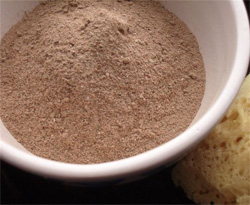 Clay is antiseptic and, like all other natural antiseptics (aromatic essences, especially), it does not show the usual inconveniences of certain chemical antiseptics, which kill the microbes but at the same time destroy all the cells that make up our tissues.
Clay is antiseptic and, like all other natural antiseptics (aromatic essences, especially), it does not show the usual inconveniences of certain chemical antiseptics, which kill the microbes but at the same time destroy all the cells that make up our tissues.
Alexis Carrel often spoke about the “intelligence of nature”. Clay is certainly endowed with it, but this intelligence, as he wrote, is still unexplained by means of our current knowledge.
Bactericidal properties of clay are used effectively in many infectious states: enteritis, colitis, colibacilosis, lung or parasitic diseases (intestinal parasites). A purulent plague treated with clay heals with a speed that amazes us. Pus is removed and tissues recover. As in the case of cabbage, clay – in internal and external use – collects pus and, in fact, disinfects and cleans the body.
The analysis carried out in 1928 by Prof. Laborde, from the Faculty of Pharmacy in Strasbourg, showed that curative clay is sterile, i.e. devoid of microbial germs. It seems, on the other hand, that clay is radioactive, as perhaps are all bodies. Its concentration would be, by different areas, from 0,3 to 1.25 Mache unit.
Alongside its antiseptic and healing properties, clay is a remarkable absorber: 5 g are enough to discolor 10cm3 of a solution of methylene blue of 0.1%. It absorbs bad smells (disinfection of bedpans and night pots). Its absorbent power explains the preservation of eggs according to the Extreme Oriental method and also its ability to remove the unpleasant smell of some medicinal oils and of certain fats that want to compete with butter. Clay has antitoxic properties.
In industry, clay is used to discolor vegetal or mineral oils. Clay has degreasing and discoloring properties (Romans used to soak laundry in clayey water).
COMPOSITION
Clay contains: silica 49,10%, alumina 14,61%, iron oxides 5,65%, lime 4.44%, magnesium 4,24%, alkali oxides 3.08%, titanic anhydride 0.74%, moisture 7,40%, loss at fire 10,85%.
Due to its high silicon content, clay is recommended for many diseases, particularly arteriosclerosis, tuberculosis, premature ageing and multiple degenerative states. The presence of magnesium, iron, and calcium explain the role of clay cures in asthenia, demineralization, cancerous states and anemia.
USE OF CLAY
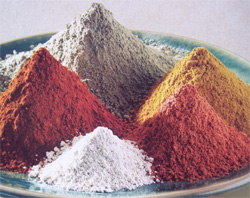 INTERNALLY: clay for internal use has to be fat, finely sifted, without sand, not boiled and not mixed with medicinal products. There are green, white, yellow, red clays. Some tests may allow us to determine, for each ill person, its more active variety. In principle, the clay of the area in which we live is the most advisable.
INTERNALLY: clay for internal use has to be fat, finely sifted, without sand, not boiled and not mixed with medicinal products. There are green, white, yellow, red clays. Some tests may allow us to determine, for each ill person, its more active variety. In principle, the clay of the area in which we live is the most advisable.
The usual daily dose is a teaspoon added to 3/4 cup of water (1/2 teaspoon for children under 12 years old). It is very good if we start by drinking only clayey water for 4-5 days. For certain diseases: dysentery, gastrointestinal disorders, anemia, tuberculosis, we can take 2-3 teaspoons a day.
For the internal clay cure first use “clay water”, obtained from mixing clay with water (if possible spring water) prepared in the evening. The next day drink, on an empty stomach, only the clear water. Repeat this for eight days. This purifies the blood and prepares the body to get in a second stage (after eight days of rest) “clay-milk”. The preparation must be made on the eve: we put one teaspoon of clay in 3/4 cup of water, leave it all night and the next morning, we sip after we mixed it (in the glass). We can also drink the clay water before we go to bed or even half an hour before one of the main meals.
If a consecutive constipation appears we must reduce the dose of clay, increasing the amount of water and ingesting the content in two or three rounds during the day (half an hour before meals). If constipation persists, we have to cease the clay ingestions for 10-15 days.
For children, who obviously cannot swallow a clay solution, we will prepare some small clay balls with aromatic water (water in which we left pine buds, eucalyptus, thyme, mint to macerate). They will suck these little balls and they will get the same benefits. We recommend that you suck these little pieces of clay in the case of gingivitis, stomatitis, pioree alveolara, angina, catarrh.
The first clay cure is indicated to last for three weeks. Then we will resume it for 10 days per month or every other week. Clay cure is incompatible with a diet rich in oils and fats; it is indicated to drink clean water or juices in sufficient quantities between meals.
The absorbent power of clay allows it in addition to neutralize the unpleasant taste of certain waters.
Clay cure is counter indicated in chronic constipations, tendencies towards intestinal occlusions and hernias and in cases of hypertension should be used with caution.
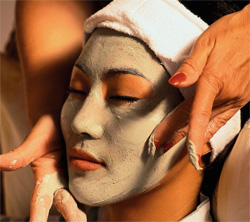 EXTERNALLY: preparation of clay toothpaste is very simple: put the clay into a glass, wood, porcelain, faience container (never a metal or a plastic container) and mix, by adding water, to obtain a dense paste, a little softer than the plasticine. It is recommended to cover the clay with water and to leave it for a few hours until you obtain a homogenous mush. Efficiency will increase if we add some plant macerates or a few drops of different natural tinctures. We will make thick poultices out of it (as indicated) of 1.5-2 cm long and of a size that would slightly exceed the region treated.
EXTERNALLY: preparation of clay toothpaste is very simple: put the clay into a glass, wood, porcelain, faience container (never a metal or a plastic container) and mix, by adding water, to obtain a dense paste, a little softer than the plasticine. It is recommended to cover the clay with water and to leave it for a few hours until you obtain a homogenous mush. Efficiency will increase if we add some plant macerates or a few drops of different natural tinctures. We will make thick poultices out of it (as indicated) of 1.5-2 cm long and of a size that would slightly exceed the region treated.
Poultices (patches) will be applied, as appropriate, cold, lukewarm or warm:
– cold, on inflamed areas or on the lower side of the abdomen, in this case we have to renew them as soon as they heat up (15, 20, 30 minutes, in general); should the sensation of cold persist, we have to replace the poultice with a lukewarm one;
– lukewarm or warm on the liver area, on the kidneys, bladder, bones; the poultice will be applied directly to the skin, if necessary through a gauze.
Certain diseases (cardiac disorders, bruises, varicose veins) are treated, at least initially, by applying compresses and then poultices.
Poultices and patches will be fixed, according to regions treated, with a bind, a flannel band or a T-shaped bandage (for the perineum). For a plaster on the neck, an immobilization band is fixed around the forehead, not the neck.
The period of application varies, depending on the circumstances, from one to two-three hours, sometimes all night. If unpleasant sensations occur (cold, pain) remove the poultice and do not renew it until after 12 or 24 hours. If the poultice dries too quickly, it must be replaced with a fresh one.
After removing the patch or poultice, any adherents remaining on the skin are removed by simply washing them with cold or lukewarm water. The pace of applications varies according to patient condition and reactions:
– abscesses, various suppurations: renew the patches every half an hour, then every one hour and a half, day and night if necessary; during the night you may replace the patch with a compress with clayey water, which will be renewed once or twice;
– lumbar regions, lower abdomen, the liver area: applications can stir more or less intense reactions; Therefore, we will limit applications to a poultice a day, kept for two to four hours; we can sometimes leave the patch all night.
We will not make more than one application at a time. If the patches will be indicated for several places (the lower part of the abdomen and the lung, for example), we have to maintain an interval of two to four hours between the various applications.
Women shall refrain from application of clay during their menstrual period. After usage it is necessary to dispose of the clay, for it is impregnated with toxins. Also wash the used bandages.
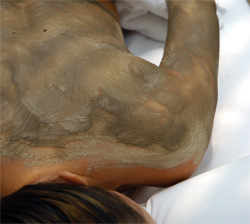 Any external treatment with clay must be preceded or accompanied by an internal phyto-therapeutic purification treatment, lime juice, natural light laxatives, generally clay, and non toxic balanced food.
Any external treatment with clay must be preceded or accompanied by an internal phyto-therapeutic purification treatment, lime juice, natural light laxatives, generally clay, and non toxic balanced food.
Once the clay cure has started it must not be interrupted – except in exceptional cases. It triggers a series of successive processes (drainage, revitalizing) and stopping them might be harmful. At first, as with other numerous active cures, we will be able to see a worsening of the condition apparent (increase of any atone wound, ulcer, temporary return of rheumatic pain).
We have to always begin with thinner poultice (1/2 cm), a little stretched, for one to two hours. Progressively, we will use 1-2 cm thick patches of a bigger size and of longer implementation periods. All these, provided that they are well accepted.
Another way to use clay is as follows: take clay loam and fat loam (white clay), from a greater depth, in a sun-beaten shore. The clay is kept in the sun in order to load it with the subtle beneficent energies. Then, after it dries either in the sun, or in the oven or even on the stove (but beware, moderate temperature), crush it finely and mix it well with water or with vinegar, or with a macerate of mare’s tail (Hippuris vulgaris), or hoary cinquefoil (Potentilla argentea). When it gets to the consistency of a liniment, smear it on a cloth and place it whilst warm on the painful side, chest, back, abdomen, knees. Leave it there until it dries, and then change it. In addition to compresses and plasters, clay can be efficiently used in powder form, like the French chalk, both in infants, children and in adults. The effect of powdering the wounds with clay has an antiseptic healing action. As well as for cracks, eczema, furunculosis, abscesses, ulcers, some cases of erythema. Plagues can be washed with a liquid solution of clay, plus a few drops of lemon. The clay poultices are indicated in cases of migraine, neuralgia, and dental disorders.
Beauty masks very often contain clay. It is simpler, more economical and more effective to use clay powder and to make a paste with half water and half cucumber, tomato or grape juice. This paste will be stretched in a thin layer all over face and left until it dries: fifteen minutes to half an hour. It will remove with lukewarm water. This process, once a week, presents only advantages. It treats acne, face eruptions, cuperoze and wrinkles. Clay powder, mixed with olive oil, produces a cream effective in all the cases listed above.
On the other hand, clay can also be used in vaginal washing, in doses of 3-4 tablespoons to one litre of water, lightly heated (leucorrhea, metritis, vaginitis, colitis, rectite, intestinal parasite).
For patients who were prescribed mud baths, who do not have the time or means to go to a specialized thermal resort, here is the way they can benefit from this therapeutic method: prepare a mush of clays in sufficient quantity to fill a bathtub. The bath can be used multiple times. It will be enough to add each time, a sufficient quantity of warm water. The duration of these baths will be 5-10 minutes at first, then 15-20 minutes. The baths will be taken every two days, or twice a week for a month. Repeat if necessary after a break of 3 to 5 weeks. They are indicated both in cases of treating rheumatic or bone diseases and anemia. Local baths will be realized in the case of hand or leg rheumatism. As much as possible, seawater or water in which we put sea salt is most preferable.
yogaesoteric
December 2011


